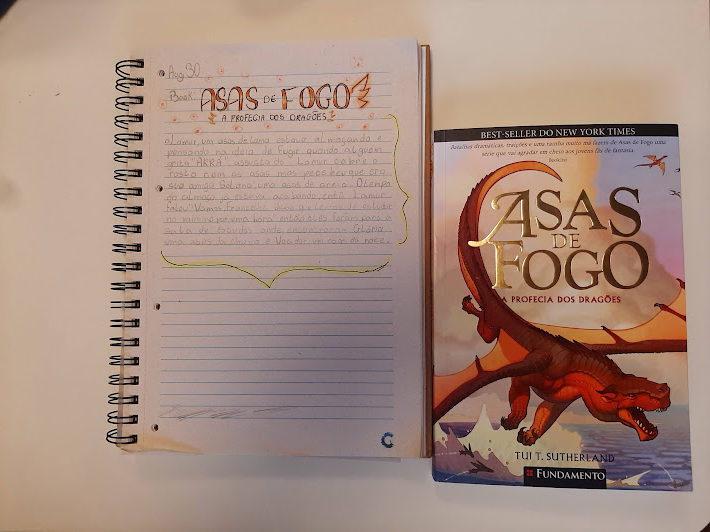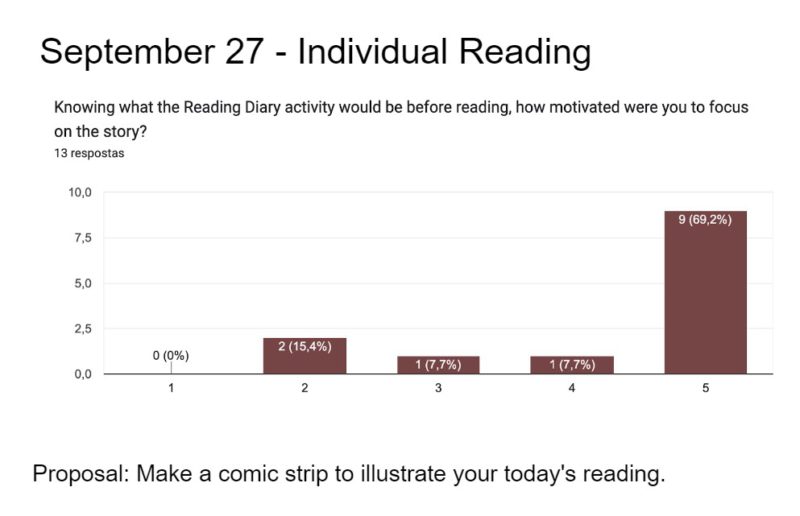Unraveling the JOY of reading
Which written proposals have proven most effective in inspiring reading engagement in G5 learners?
General topic of interest
Reader's and Writer's workshop
Participants
Grade 5C - 2022 from Escola Concept São Paulo provided data for our research.
Literature Review
We have been using the Common Core Reading & Writing Workshop Curricular plan for 5th grade by Lucy Calkings and colleagues from the Reading and writing project
as an inspiration
Data collecting approach
Twice a week, from September 13 to November 11, Grade 5C learners were invited to engage in different Reading Diary proposals after individual or collective reading. The proposals were explained before the reading moment. After reading for 30-40 minutes, learners had to write about their reading of the day using the proposal previously explained. In the sequence, they had to fill out a reflection form so that they could express their opinion about their engagement with reading and writing.
Data collection tools/resources
Reading Diary
Learners used their Reading Diary notebook to write about their reading using the proposal of the day.
Educators used specific rubrics to assess learner engagement in the proposal.
Click HERE to see the rubrics. The results can be seen HERE.
Reading Reflection
Learners filled out a form to reflect on their engagement with reading and writing.
Click HERE to see the Reading Reflection survey.
Emerging results
According to the data, the proposals that showed more engagement according to the rubrics were "How would you change the story you just read?", followed by "Create a flow map to represent the story" and "How would you represent this story in a comic book format?". According to their personal answers, the proposals that proved to inspire the most engagement were "How would you include the character you chose for the Book Character Day in your story?", followed by "Make a comic strip to illustrate your today's reading" and "What character would you include in your today's reading? Why?".
Reflections
Initially, our aim of this research was to understand which written proposals would be most successful in engaging students in reading moments. For this, we looked for data in their post-reading written productions and Google Forms in which they shared their opinions and had a more direct tool to express themselves.
Looking at the results, it was possible to observe that the written proposals that had the highest scores in the rubrics were different from the proposals that were voted as the most engaging in the opinion of the students. This made us realize how relevant it was to look at the data from different sides and how important it was to involve them in the process. The data took us down a different path. Instead of creating a ranking of the most relevant proposals, the results made us realize that the conclusion is that a process of collective construction of research that was extremely relevant to inspire the engagement and the taste for reading, mainly for having different and motivating proposals.
From the moment we discussed ideas and developed our essential question, the students were aware that they would be researched and committed to the process with us. Cultural forces were also relevant in the development of the research. The establishment of a routine was fundamental for the success of our achievements, as there was consistency and the students knew the expectations. This was especially important during the reading moments, when the purpose of the reading diary was explained beforehand so that they could take it into account during the reading. They also had the opportunity to orally share their reading experiences with their peers, telling about the day's reading and expressing their opinions and feelings. This part of the proposal was important to value their contributions and different types of evaluation and expression. The physical Reading Diary was constantly displayed at events for the school community, an action that made the G5C students even more proud and motivated to write to share.
In addition, they were also able to reflect on the Habits of Mind that were developed during this semester. They understood that persistence was the key to developing their reading and writing skills. The more they wrote, the more they practiced and developed language skills, striving for accuracy and communicating with clarity and precision.
Thinking about the next steps, we believe that this research must continue and spread so that it can inspire other educators and students. In addition, technology and more communication opportunities can be added by creating an internal social media where students can share videos about their reading moments to recommend books and receive feedback, as well as link these media to physical books to engage with future readers.
We are anxious and very excited to continue discovering the pleasure of reading, building this research in an innovative and collaborative way, exploring how different technologies can support us, and opening new doors to share and consolidate the learners' productions.



















